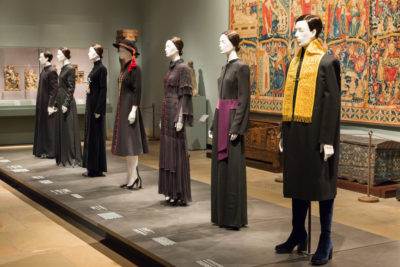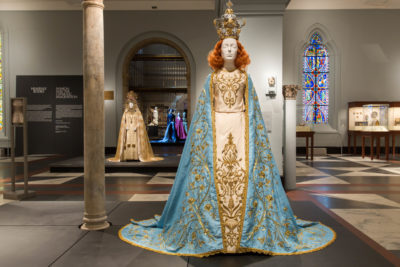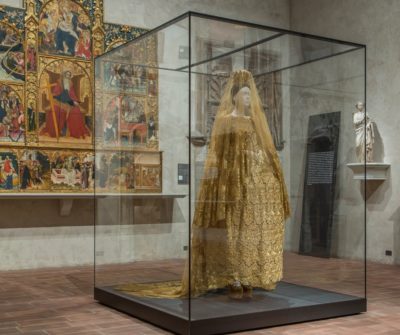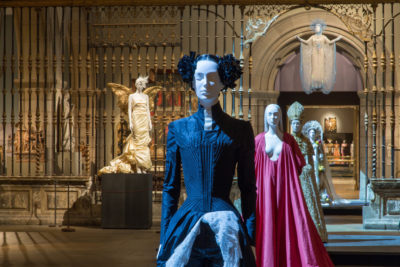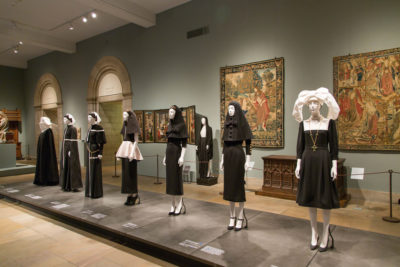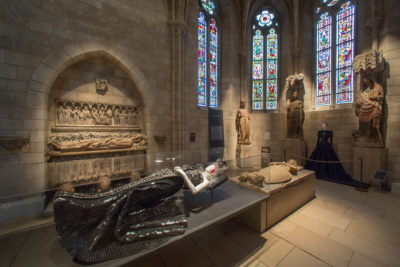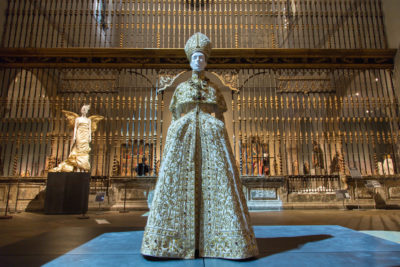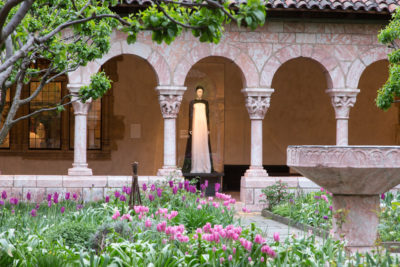The Metropolitan Museum of Art’s exhibition Heavenly Bodies: Fashion and the Catholic Imagination, which opened this past spring and will…
Couture and the death of the real: A response to Heavenly Bodies

The Metropolitan Museum of Art Costume Institute’s Spring 2018 exhibition, Heavenly Bodies: Fashion and the Catholic Imagination, has been described as “a dialogue between fashion and medieval art from The Met collection to examine fashion’s ongoing engagement with the devotional practices and traditions of Catholicism.” Among the artifacts on display are dozens of pieces, including papal robes and jewels, never before seen outside the Sistine Chapel Sacristy. The papal objects are juxtaposed alongside baroque-style dresses from leading fashion houses—among them Dolce and Gabbana, Versace, and Dior—to demonstrate the longstanding influence of liturgical vestments on international designers. While fascination with Catholic dress is not new, the exhibit raises many questions about the Vatican’s involvement in light of histories of American anti-Catholicism and philo-Catholicism. And as this exhibit came in the midst of what Robert Orsi in his introduction to the forum describes as “the worst crisis in the history of modern Catholicism,” issues of sexuality, aesthetics, and power are brought into view.
In the essays that follow, contributors write on these and many other aspects of the exhibit, including its curation, content, and reception from interdisciplinary research standpoints.
Robert Orsi, Northwestern University, and Mona Oraby, TIF managing editor and Amherst College, cocurated this forum. They extend their gratitude to the Metropolitan Museum of Art—especially Jessica Glasscock, Mellissa Huber, Nancy Chilton, and Mika Kiyono—for making copies of the exhibition catalog available to the forum contributors and for providing the exhibition photography that accompanies their essays.
Image credit: Gallery View, Pontaut Chapter House. © The Metropolitan Museum of Art
The soulful, comic defiance of Heavenly Bodies
Heavenly Bodies surprised me because I was anticipating a celebration of Catholic aesthetics and fashion. It was partly this. But…
On the advantage and disadvantage of history for life
The more closely one examines the Vatican loan, laid out with minimal commentary in the catalog’s first volume (separated from…
The cardinal’s new clothes?
Perhaps predictably, then, given the show’s nature, Heavenly Bodies thus focuses on Catholicism’s pomp, rather than its poverty. Both the…
The American romance of the not-so-little black dress
The focus on nuns in Heavenly Bodies highlights the historical oddness—really, the queerness—of nuns in the American imagination. It is…
Sexy celibates and unmanly men?
The Metropolitan Museum of Art’s Heavenly Bodies features stunning haute couture and trendy prêt-à-porter garments staged with objects from medieval…
Time, gender-bending, and the medieval church
There is undoubtedly an element of drag in contemporary women wearing quasi-clerical garb—drag charged with coquettish sacrilege. These women are…
Refashioning gender and modern visual theology
The visual and material repertoire of Heavenly Bodies has also been fundamentally shaped by the role of allegory in Catholic…













